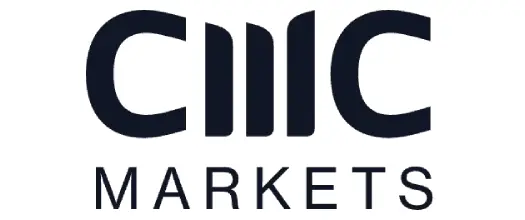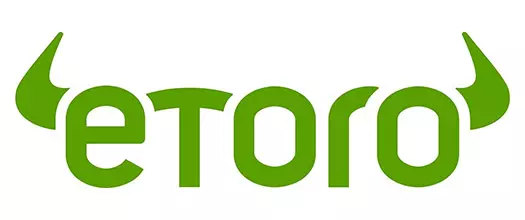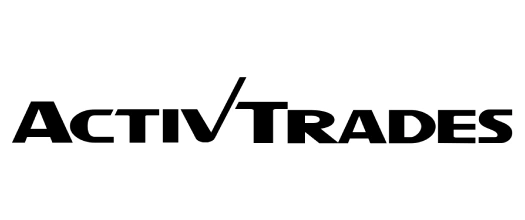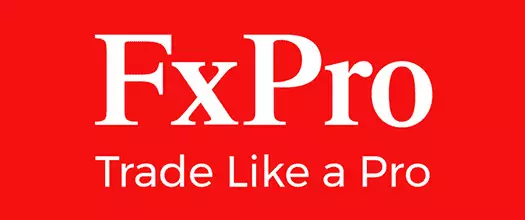Exchange-Traded Funds (ETFs) have become a cornerstone of modern trading, offering diversification, flexibility, and cost-efficiency. These products hold great appeal among UK traders due to their accessibility and the robust trading infrastructure provided by the London Stock Exchange, whose main market comprises over 2,300 ETFs.
Furthermore, official statistics reveal that the total value of exchange-traded products on the LSE exceeded £170 billion in 2024. This impressive figure reflects the growing interest in these financial instruments among retail and institutional investors in the country.
 CMC Markets
CMC Markets eToro
eToro ActivTrades
ActivTrades Pepperstone
Pepperstone FxPro
FxPro IG
IGBelow, you can find more information about the best ETF CFD trading platforms in the UK:
- At CMC Markets, over 1,000 ETFs are available through CFDs, although customers can further diversify their portfolios by speculating on the price fluctuations of more than 9,000 shares of companies from 20+ regions.
- UK traders who join eToro can engage in CFD trading with more than 700 ETFs without commissions or custody fees. Investing in actual ETFs is also possible. CFDs on shares and ETFs generally have spreads from 0.15%.
- ActivTrades provides a choice from various UK, US, European, and crypto ETFs, available on MetaTrader 5 and the broker’s proprietary platform. Position size ranges from 0.01 to 10 lots for UK ETFs.
- Pepperstone delivers favourable trading conditions for 100+ ETFs across versatile sectors and countries. Customers can trade this asset class through CFD and spread betting accounts.
- FxPro offers over 40 ETFs across different sectors like bonds, commodities, currencies, equities, volatility, and real estate. Traders can conveniently filter the selection by sector or look up concrete ETFs with the search tool.
- IG impresses with a selection spanning north of 5,400 ETFs from different categories like currencies, commodities, indices, and more. Customers can also profit from the declining value of indices and other underlyings by trading inverse ETFs. Smart-beta ETFs are another option.
If you are a UK trader looking to capitalise on this trend, trading ETF derivatives like CFDs can be an excellent way to gain exposure to different markets without owning underlying assets. This article focuses on the best brokers for ETF CFD trading in the UK and provides actionable insights to help you get started. Ready to dive in? Start by browsing our selection of top brokers, meticulously chosen after extensive research and hands-on testing with live accounts.
What Are ETFs?
ETFs (Exchange-Traded Funds) are investment funds traded on stock exchanges, much like individual stocks. They are designed to track the performance of a specific index, commodity, sector, or asset class.
These financial products offer a unique blend of diversification and liquidity, making them a popular choice for investors worldwide. With over 12,000 ETFs globally in late May 2024, as reported by J.P. Morgan, there is an ETF for nearly every investment strategy.
Types of ETFs
ETFs are a versatile tool for building a diversified portfolio, and their popularity in the UK continues to grow. They can be categorised based on their management style and the asset class they track.
- Passively managed ETFs aim to replicate the performance of a specific index, such as the FTSE 100 or MSCI. They typically have lower fees compared to actively managed funds.
- Actively managed ETFs are run by portfolio managers who aim to outperform a benchmark index. They often come with higher fees.
- Currency ETFs give you exposure to foreign currencies or a basket of currencies. They track the performance of a specific currency or a currency index, offering a convenient way to invest in the foreign exchange market.
- Commodity ETFs provide exposure to commodities like gold, oil, or agricultural products like wheat, soy, or cocoa.
- Bond ETFs focus on fixed-income securities, such as government or corporate bonds.
- Specialty ETFs target niche markets like clean energy or technology.
- Sustainable ETFs invest in companies or projects that meet specific environmental, social, and governance (ESG) criteria.
- Factor ETFs rely on specific factors like value, growth, or momentum to select investments.
Requirements for ETF Listing on the London Stock Exchange
Financial institutions and asset management companies looking to list their exchange-traded funds on the London Stock Exchange (LSE) must follow a structured process, which involves obtaining regulatory approval and applying for exchange admission. First and foremost, the ETF needs to be officially approved or recognised by the UK’s regulator, the Financial Conduct Authority (FCA).
This type of investment fund can be structured in several ways, including as an authorised unit trust, an investment company with variable capital, or an authorised contractual scheme. Exchange-traded funds already listed within the EEA can apply directly for admission to trading on the LSE Main Market, provided they meet the eligibility criteria.
The underlying fund must operate as an open-ended investment vehicle. It must also be eligible for settlement within key clearing systems like Clearstream or CREST. The LSE maintains specific fund characteristic requirements to ensure a liquid and orderly market.
The application process involves submitting comprehensive documentation, including relevant application forms, an approved prospectus, listing particulars, and confirmation of regulatory compliance. Timelines for the application vary depending on whether the ETF is seeking a full UK listing via the FCA or admission based on an existing EEA listing.
Furthermore, the LSE mandates the presence of at least one registered market maker per admitted ETF. This market maker must provide continuous two-way pricing from the commencement of trading. An application assessment fee is payable to the London Stock Exchange. ETF issuers should consult the official guidelines of both the LSE and the FCA for detailed and current requirements.
How Are ETFs Traded?
ETFs can be traded in several ways, each offering unique advantages depending on your investment goals, trading style, and risk tolerance. Here are the most common ways to gain exposure to these exchange-traded baskets of securities. Each of these trading methods has both benefits and downsides that you should carefully consider before committing your capital.
- Spot Trading: Spot trading involves buying ETFs directly on stock exchanges like the London Stock Exchange (LSE) or the Aquis Stock Exchange (AQSE). Spot trading is ideal for long-term investors looking to hold exchange-traded funds in their portfolios, as it involves buying and owning the actual underlying assets. This approach is relatively straightforward and allows you to benefit from dividends and long-term price appreciation.
- Contracts for Difference (CFDs): Trading ETF CFDs allows you to speculate on price movements without owning the underlying assets. These are derivative products that mirror the price of an ETF, enabling you to profit from both rising and falling markets. One of the key advantages of CFDs is the ability to use leverage, which can amplify both your potential gains and losses. This derivative instrument is particularly attractive for short-term traders looking to capitalise on market volatility.
- Futures: ETF futures are standardised contracts that obligate you to purchase or sell an ETF at a predetermined price and date in the future. These contracts are commonly used by institutional investors and advanced traders to hedge against market volatility or speculate on price movements. Futures trading requires a deeper understanding of market dynamics and is more complex than spot trading or CFDs.
- Options: ETF options give you the right, but not the obligation, to buy or sell an ETF at a specific price (known as the strike price) within a set timeframe. Options trading is versatile and can be used for various purposes, such as hedging, income generation, or speculation. While options offer flexibility, they also come with risks, including the potential loss of the premium paid for the option if the trade is unsuccessful.
Why UK Traders Should Opt for ETF CFDs
CFDs hold a particular appeal with UK traders due to their flexibility and access to leverage. They allow you to profit from both rising and falling prices, which makes them ideal for short-term strategies like day trading and swing trading. The access to leverage enables traders to increase their exposure to exchange-traded funds with smaller initial investments.
Popular ETF CFDs to Trade in the UK
The UK ETF market is one of the most advanced in Europe, offering a broad selection of funds tailored to both local and global investors. With the London Stock Exchange (LSE) serving as a key hub for ETF trading, UK residents benefit from deep liquidity and access to some of the world’s most widely traded ETFs. Below, we highlight five popular ETFs available to UK traders through CFDs.
- Vanguard FTSE All-World UCITS ETF: This ETF provides exposure to a vast range of global equities by tracking the FTSE All-World Index, which covers both developed and emerging markets. It is a favourite for traders seeking broad diversification across thousands of companies worldwide, making it a solid foundation for long-term portfolios.
- Invesco Physical Gold ETC: Unlike traditional ETFs, this exchange-traded commodity tracks the price of physical gold. It is ideal for traders looking to hedge against market volatility or inflation, as gold is often seen as a safe-haven asset. The fund is backed by allocated gold bullion, offering direct exposure to precious metal prices.
- iShares S&P 500 Information Technology Sector ETF: Focused on the high-growth tech sector, this ETF mirrors the performance of the S&P 500 Information Technology Index, which includes giants like Apple, Microsoft, and Nvidia. It is a viable choice for traders bullish on the tech industry’s long-term potential, offering concentrated exposure to leading innovators.
- iShares MSCI United Kingdom ETF: This ETF tracks the MSCI United Kingdom Index, providing targeted exposure to UK large- and mid-cap stocks. It is a go-to for traders who want to invest in companies like AstraZeneca, Shell, and HSBC, while benefiting from the stability and growth potential of the domestic market.
- Vanguard S&P 500 UCITS ETF (GBP ACC): A low-cost way to invest in the S&P 500, this ETF replicates the performance of the 500 largest US companies, including Amazon, Tesla, and Meta. The accumulating (ACC) version automatically reinvests dividends, making it tax-efficient for those seeking long-term growth.
Leverage in ETF CFD Trading
Leverage allows traders to amplify their exposure to an asset without committing the full capital required for a trade. It works by borrowing funds from the broker, enabling you to control a larger position size than your initial investment would otherwise allow.
For example, you can control £5,000 worth of ETFs with an investment of £1,000 when using 1:5 leverage. This means that even small price movements in the ETF can result in significant gains relative to your initial capital.
However, it is important to remember that using leverage can be tricky. While it can magnify your profits, it also increases the risk of suffering losses exceeding your initial capital.
The use of leverage is heavily regulated in the UK to protect retail traders from excessive risk. FCA requirements impose a 1:5 cap on the maximum leverage retail CFD traders can use for ETFs.
Professional traders, on the other hand, may have access to higher leverage, but they must satisfy certain criteria to qualify for this status, including demonstrating sufficient trading experience and financial stability. When using leverage, it is crucial to employ proper risk management strategies, such as setting stop-loss orders and only risking a small percentage of your capital on any single trade.
Brokers Compared by Number of Tradable Instruments
How to Start Trading ETFs with a CFD Broker
CFD trading is an accessible and flexible way to gain exposure to the ETF market without owning any underlying assets. Whether you are a beginner or an experienced trader, getting started with ETF trading involves a few straightforward steps. We outline them below to help you embark on your ETF trading journey with confidence.
- Choose a Broker: Select a reputable broker regulated by the FCA and look for low fees, a user-friendly platform, and a wide range of ETF CFDs.
- Open and Verify Your Account: FCA-regulated brokers require ID verification via online document upload (passport, driving licence, proof of address), instant electronic checks, or a quick video call. The process is secure and usually completed within one to two business days, letting you start trading right after.
- Deposit Funds: Fund your account using a secure payment method like bank transfer, PayPal, or debit/credit card.
- Analyse Potential Price Movements: Use technical and fundamental analysis to identify trading opportunities.
- Place an Order: Execute your trade using market, limit, or stop orders, depending on your strategy.
Strategies for ETF CFD Trading
To become a successful ETF trader, you need a good strategy tailored to your goals, risk tolerance, and trading style. Having a clear plan can help you navigate market volatility and maximise potentially lucrative opportunities. In this section, we explore some of the most common strategies used by CFD traders.
- Day Trading: Day trading involves opening and closing positions within the same trading day to capitalise on short-term price fluctuations. This strategy requires closely monitoring the ETF market and a solid understanding of technical analysis. Day traders often rely on charts, indicators, and real-time news to make quick decisions.
- Swing Trading: This approach focuses on capturing medium-term price movements over several days. Traders using this strategy aim to profit from market trends by identifying key support and resistance levels. Swing trading requires less commitment than day trading but still demands a good grasp of technical and fundamental analysis.
- Momentum Trading: Momentum trading involves identifying ETFs with strong upward or downward trends and riding the momentum until it shows signs of reversal. This strategy relies on technical indicators like moving averages and the relative strength index (RSI) to spot potential opportunities. Momentum traders often target high-volatility ETFs to maximise returns.
Benefits and Shortcomings of ETF CFD Trading
Trading ETFs with CFDs offers a blend of flexibility and accessibility, making it an attractive option for traders looking to capitalise on market movements without owning the underlying assets. However, it still comes with its own set of challenges. Understanding these can help you make informed decisions and manage your positions more effectively. Here is a breakdown of the key benefits and shortcomings.
Benefits
- Access to a wide range of markets and asset classes, including equities, commodities, and bonds.
- Ability to profit from both rising and falling markets through short selling.
- Leverage allows you to amplify potential returns with a smaller initial investment.
- No administrative burden of ownership, such as dealing with dividend distributions.
- Lower transaction costs compared to traditional ETF investing.
- ETF CFDs can be a useful tool for hedging your existing positions.
Shortcomings
- Leverage increases the risk of significant losses, which can exceed your original investment.
- CFDs are not suitable for long-term investing due to mounting overnight financing costs.
- Broker fees and spreads can add up, especially for high-frequency traders.
- Market volatility can lead to rapid price changes, increasing the risk of mounting losses.
FAQs
Can I trade ETF CFDs 24/7?
No, ETF CFDs trade during the market hours of their underlying exchange. For example, FTSE 100 ETFs follow London Stock Exchange hours from 8:00 AM to 4:30 pm GMT. While some brokers offer extended hours for certain CFDs, true 24/7 trading is generally unavailable for ETF CFDs tracking major indices. Always check your broker’s specific trading hours.
Are ETF CFDs suitable for beginners?
While ETF CFDs are accessible, they require a solid understanding of leverage and risk management. Beginners should start with a demo account, preferably at an FCA-regulated broker.
What is the minimum deposit for trading ETF CFDs?
The minimum deposit varies by broker but typically ranges from £0 to £100.
Can I lose more than my initial investment?
FCA-compliant brokers offer negative balance protection, ensuring you cannot lose more than your account balance.
How do I choose the right ETF CFD?
You can consider factors like liquidity, expense ratio, and the underlying index or asset. Research the ETF’s historical performance and trading volume.